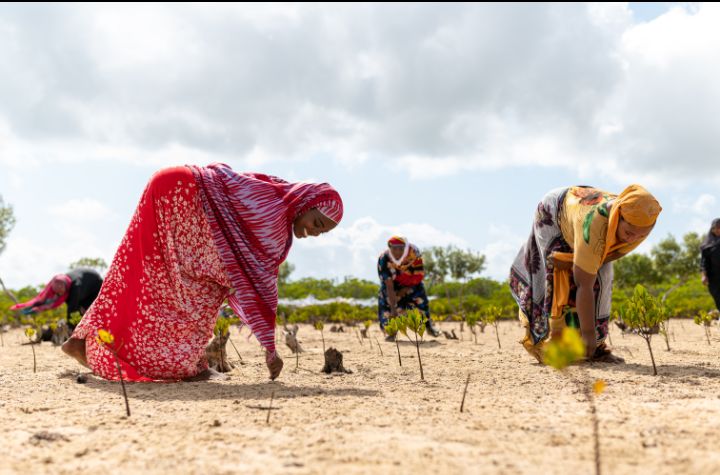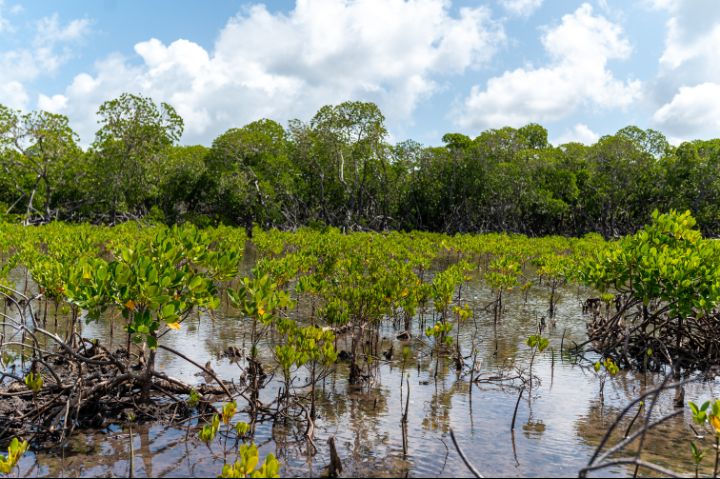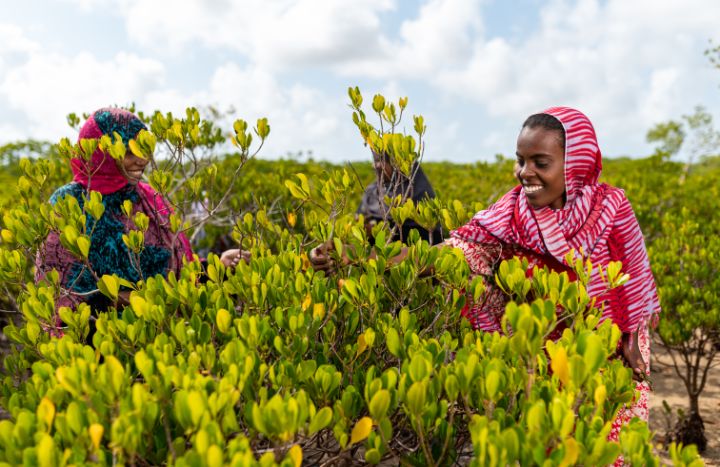
- The whole world is calling for every responsible citizen to try and plant a tree to address adverse effects of climate change
- Encroachment to mangroves forests for economic purposes has shrunken the coverage and laid coastal lines to climatic challenges.
- A group of women led by Zulfa are already implementing climate change COP28 in Pate Island, Lamu County
Mangroves are vital wetland plants that cover most coastal areas. In the Kenyan coast, a threat to this important ecological component has given a group of women the onus to restore the glory of this resilient plant to shield the coast against natural threats such as strong winds and tsunamis.
The mangroves are among other reasons used as firewood, food, fish trap zones, medicine and building materials by communities living in the Kenyan coast.
However, increased encroaching of these wetlands for economical purposes has exposed these plants to a shrinking coverage and laid bare the region to climatic challenges.
The concern by a group of women from Mtangawanda in Pate Island in Lamu County has initiated activities to revive the diminishing acreage of mangroves in this region.
Collaborating with Non-governmental organizations such as Northern Rangelands Trust and The Nature Conservancy, they have been able to plant over 146,000 mangrove trees in 15,000 acres of land.
“After visiting Madagascar to see what our fellow women in that country are doing to restore the mangrove cover, we were motivated to do the same over here. We started with a group of 14 women and the number has now risen to 150 experts. We now know the best seeds to plant, the right season and the ideal soil they can do better.” Zulfa Hassan chairlady Mtangawanda women group.

Despite their strong resolve, they surmount several challenges including wading in waist-high water bodies and ignore religious restrictions to realize this important environmental obligation to save the coastal ecosystem.
“The society saw us as outcasts and reprimanded us for not staying at home as Muslim women. We were also novices initially but now we are experts though our key challenge is wading through the wetlands and we at times use boats to access some areas to plant the mangroves.” Explains Zulfa who also notes that mangroves die because of soil mixture swept to mangrove habitation by rainwater.
Mangroves can be either directly planted using scions from mother plants or cultured in a nursery for planting. Mtangawanda Women Group is currently responsible for planting over 100,000 trees in the Kenyan coast.
“We have planted three types of Mangroves namely Rhizophora, Ceriops tagal and Sonneratia alba. We also have a few of Bruguiera gumnorhiza variety.” Adds Zulfa.
Zulfa explains that crabs and fish merchants were responsible for the dwindling mangrove cover but ever since the women group started replanting the trees, men have joined after seeing the increase of crabs and fish that breed in the mangroves.
“We saw these women start this initiative but we were reluctant to join them. Later on we saw the wisdom in it since fishermen started experiencing bigger catches and therefore the need to join them to restore the mangrove environment.” Quipped in Mohammed Bwana, one of the men assisting the women to navigate the island.
Marine Conservancy Officer, from the Northern Rangelands Trust, Mohammed S. Mohamed points at illegal logging of mangroves as a threat to the efforts made to revive the density of this important plant in the coastal region.
“According to science, mangroves attract rain and they protect the communities around the shores of the ocean from strong winds and soil erosion. Here on Pate Island we have 17 rangers. Other areas have 13 others 20 rangers who assist the communities around protect and coexist with the environment. We have areas where communities depend on mangroves for firewood and to discourage this we have looked for stakeholders introducing alternative energy cooking jikos. We have also constructed biogas kits to reduce pressure on dependence of mangroves for firewood.” Explains Mohamed.
In her closing remarks, Mama Mikoko as she is well known, attributes that Mangroves are responsible for decarbonizing the air and are evergreen even in dry seasons, a big reason why they should be protected so as sustain lives.
“Women from Mtangawanda understand how endangering mangroves affects us and that is why we are on duty to restore the mangroves in this region.” Pledges Zulfa, mama mikoko.
From Thursday November 30 to December 12 2023, leaders from different countries and stakeholders gathered in Dubai for COP28 environmental conference to deliberate and make recommendations to address climate change in the world, some of which Zulfa and her team are implementing in Pate Island, Lamu County.

